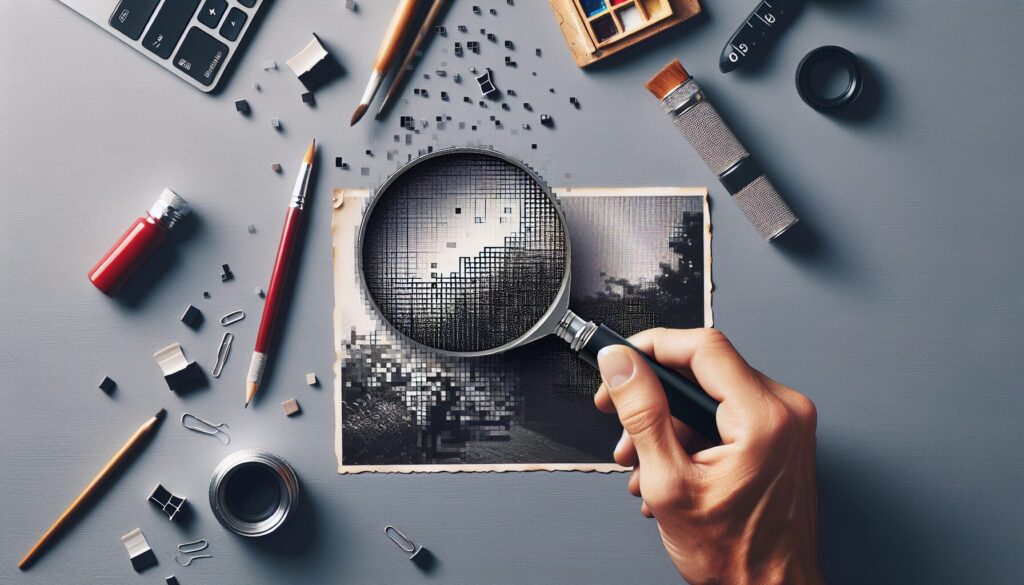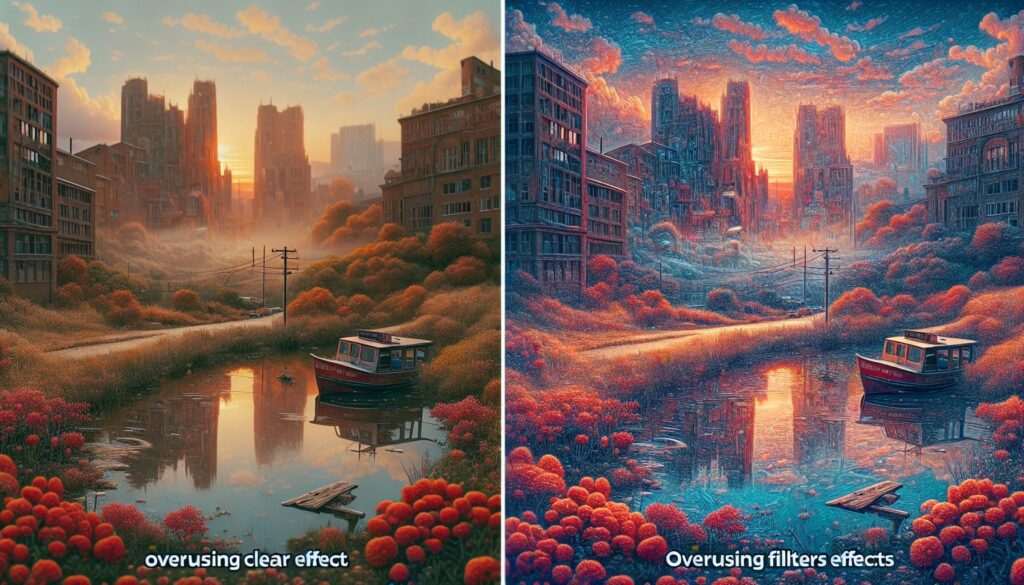Hey there, photo enthusiasts! Can you believe how far we’ve come with photo editing technology? It’s 2025, and the tools at our disposal are nothing short of magical. I remember back when I first got my hands on a Canon EOS R5. I was so excited to experiment with its 45-megapixel sensor and the incredible dynamic range it offered. Pairing it with a nifty 50mm f/1.8 lens, I was able to capture stunning portraits with that dreamy bokeh effect. But let me tell you, the real magic happens during editing. Nowadays, we’ve got AI-powered software that can practically read your mind, making adjustments to lighting, color balance, and even composition with just a click. However, with all these advancements, it’s easy to get carried away and make some common editing blunders. Let’s dive into the exciting world of photo editing and ensure we avoid those pitfalls!
Related: The Ultimate Guide to Cityscape Photography in Pakistan
Overlooking the Importance of Lighting
Lighting can make or break a photograph. I remember a trip to the majestic valleys of Hunza, armed with my trusty Canon EOS R5 and a 50mm f/1.8 lens. I was eager to capture the stunning landscapes but realized my photos lacked the vibrancy they deserved. The culprit? Poor lighting choices. When editing, it’s easy to overlook how crucial lighting is in influencing the mood and tone of your photos.
In photo editing, adjusting the lighting helps bring out the details and colors that might otherwise go unnoticed. For instance, using the ‘Curves’ tool in Adobe Lightroom can dramatically enhance the contrast, making the colors pop. However, you need to be careful. Overdoing it can lead to unnatural-looking photos, which is a common mistake many make. Try balancing highlights and shadows to retain a natural appearance.
Understanding Natural Light
Natural light is your best friend, especially in outdoor photography. Early morning or late afternoon, often referred to as the golden hour, provides the best lighting conditions. But, what if you’re shooting indoors? Utilize windows as a source of light or consider investing in a ring light. It’s an affordable way to mimic natural light. I once shot a portrait session using a ring light and the difference was incredible. The skin tones were much more flattering.
Another tip is to pay attention to the direction of light. Side lighting can add depth and texture, giving your photos a dynamic feel. In contrast, direct light can sometimes be too harsh. Experimenting with different angles and sources can elevate your edits significantly. Remember, the key to avoiding common photo editing pitfalls is to understand and control the light, making your photos truly shine.
Ignoring Image Resolution and Quality

Let me tell you a story about when I first started dabbling in photography with my trusty Canon EOS R5. I was ecstatic to capture the vibrant culture of Lahore, but I overlooked one crucial aspect: image resolution. I shot a stunning portrait of a street vendor using a 50mm f/1.8 lens, but when I zoomed in to edit, the details were disappointingly blurry. I realized my mistake—I’d set the camera to a lower resolution to save space, but it cost me quality.
Image resolution is more than just a number. It determines how sharp and detailed your photo will appear, especially when printed or viewed on larger screens. In Pakistan, where weddings and cultural events are often grand, photos are cherished. You wouldn’t want a blurry image in a beautiful album, right?
The Importance of DPI and PPI
Understanding DPI (dots per inch) and PPI (pixels per inch) can be game-changers. DPI is crucial for printing, while PPI matters for digital displays. A standard photo for print should be at least 300 DPI. This ensures clarity and detail in your prints. For digital screens, a PPI of 72 is often sufficient. However, as technology advances, devices with higher PPI settings are becoming common. According to CNET, new monitors are pushing the boundaries with 4K and even 8K resolutions.
Moreover, always check your camera settings. Even smartphones today, like the latest models from Samsung and Apple, offer high-resolution options. Ensure you’re shooting at the highest possible setting to capture every detail. This might mean investing in more storage, but it’s worth it. You’ll thank me when you see the difference in quality!
Overusing Filters and Effects

Let’s dive into the exciting world of photo editing, specifically talking about the common pitfall of overusing filters and effects. Now, I remember the time when I first got my hands on a Canon EOS R5. I was thrilled, snapping away with my 50mm f/1.8 lens. The pictures were incredible, but when I started editing, I went a little overboard with the filters. My excitement led me to use every filter in the app, from vintage to high contrast, and the results? Well, they were far from what I imagined. It was a classic case of too much of a good thing!
Filters can be fantastic for enhancing a photo, but moderation is key. We’ve all been tempted to slide that saturation bar all the way up or crank the contrast to the max. However, this often results in photos that look unnatural or overly processed. Instead, try subtle adjustments. For instance, use split toning to add warmth to highlights and cool down shadows for a balanced look. When editing, always check your histogram to ensure you’re not losing details in the highlights or shadows.
Moreover, consider the mood you want to convey with your photo. A landscape shot of the serene Shandur Lake might benefit from light adjustments to exposure and a touch of vibrance rather than heavy filters. This approach maintains the natural beauty of the scene while enhancing its features. For those of you exploring drone shots, check out your natural keyword-rich anchor text here for more on capturing breathtaking aerial views.
Finding the Right Balance
Achieving a well-edited photo is about balance and restraint. Use the power of tools like Adobe Lightroom to fine-tune the details. Explore features like the graduated filter for skies or the radial filter to draw attention to subjects. Additionally, keep an eye on trends in photo editing mistakes 2025. While trends can inspire creativity, they can also lead to over-editing if not used thoughtfully.
Remember, each photo tells a story. Let those stories shine through naturally, without an overwhelming amount of filters and effects. It’s all about enhancing your photos, not overshadowing the moments captured within them. Keep experimenting, and you’ll find your perfect editing style that suits your vision. For inspiration, look at works by photographers like The name of the entity for their use of subtle yet impactful editing techniques.
Neglecting Consistency Across Platforms
Consistency is the name of the game when you’re editing photos, especially if you’re sharing them across various platforms. Trust me, I’ve been there! I remember back in 2021, I was using my Canon EOS R5 paired with a 50mm f/1.8 lens. I captured some stunning shots at a local wedding in Lahore. The colors popped, the expressions were vibrant, and I was over the moon. But, when it came time to share my photos across Instagram, Facebook, and my blog, things got a bit tricky.
Each platform has unique display settings and compression algorithms. If you don’t adjust your edits accordingly, your photos might not look consistent. For Instagram, I typically keep the saturation a tad lower and sharpen the images slightly because their compression can make photos look overly sharp. On the other hand, Facebook tends to darken images, so I bump up the exposure just a bit. My blog, however, allows me more freedom, so I stick with my original edits.
Why Consistency Matters
Having a cohesive look across platforms enhances your brand’s professionalism. It builds trust with your audience. Imagine someone seeing your beautifully edited photo on Instagram, only to find a lackluster version on Facebook. That happened to me once, and it was a lesson well-learned. I now always ensure to preview my images on each platform before finalizing my posts. There are tools like Adobe Lightroom’s export settings that can help maintain consistency. With a few tweaks, you can ensure your photos shine across the board, no matter where they’re viewed.
Conclusion
In essence, mastering photo editing is about striking the perfect balance between creativity and restraint. The article highlights key areas where photographers often stumble, such as overlooking the critical role of lighting, ignoring image resolution, overusing filters, and neglecting consistency across platforms. By understanding the nuances of lighting and resolution, photographers can ensure their images retain clarity and vibrancy. Meanwhile, exercising moderation with filters and effects helps maintain the natural beauty of photos, allowing the story within each image to shine through. Finally, adapting edits for different platforms preserves a cohesive and professional online presence, crucial for building audience trust. By avoiding these common pitfalls, photographers can elevate their work, capturing and enhancing moments with both skill and artistry.
Continue Exploring
Unlock the secrets of storytelling through the captivating lens of time-lapse photography. Dive into a world where every frame speaks volumes, and discover how this unique technique can transform your narratives.
Frequently Asked Questions
What are the most common photo editing mistakes beginners make in 2025?
In 2025, beginners often make mistakes like over-editing images, using filters excessively, not paying attention to image resolution, ignoring color balance, and neglecting to save edits in non-destructive formats. These errors can lead to unnatural-looking photos and loss of original image quality.
How can I avoid over-editing photos with AI tools in 2025?
To avoid over-editing with AI tools in 2025, start by understanding the capabilities and limitations of the software you’re using. Use AI features sparingly to enhance rather than overpower the image, and always compare your edits with the original. Ensuring subtlety and maintaining the photo’s natural look is key to avoiding over-editing.
Why is it important to maintain proper color balance in photo editing 2025?
Maintaining proper color balance in photo editing is crucial as it ensures that the colors in your photos are true to life and consistent across different viewing platforms. In 2025, with the proliferation of advanced displays and varied lighting conditions, incorrect color balance can lead to distorted visuals and misrepresentation of the photo’s mood and context.


Leave a Reply